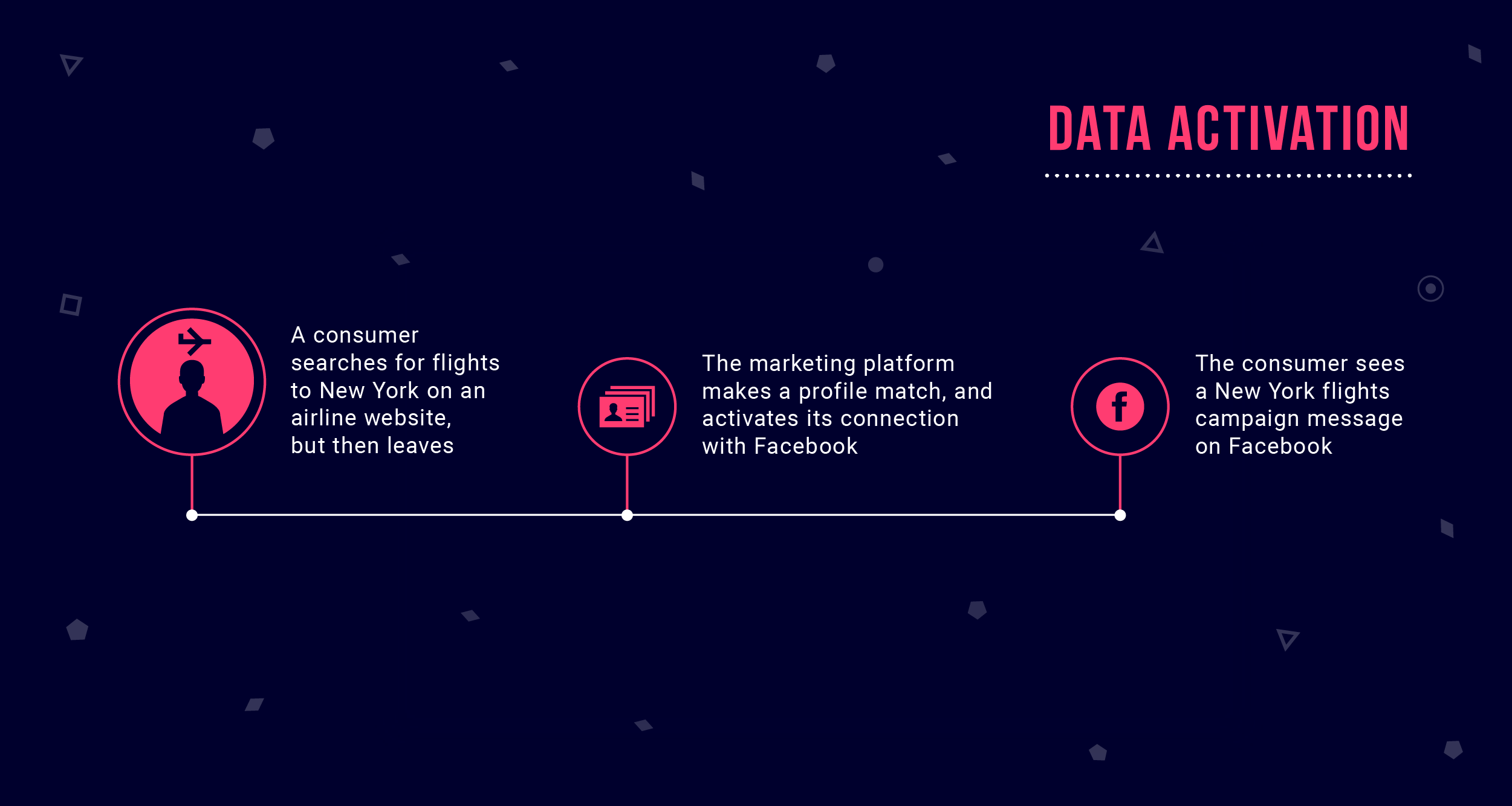Data Activation vs. Journey Orchestration
by Richard Jonkhof on 4.1.2022

Simply put, marketing automation platforms make marketing tasks easier. They streamline repetitive processes, improve overall efficiency and allow members of your marketing team to concentrate on more creative projects.
Most marketing platforms include data activation tools, which turn raw consumer information into actionable insights that marketers can use to improve targeted ad strategies. A select few, including Relay42, focus on journey orchestration instead.
But what is journey orchestration — and how is it different from data activation? If you currently use an activation-focused marketing automation platform, should you switch to a journey orchestration solution instead?
Recently, we spoke to Relay42 in-house strategy consultant and customer success manager Richard Jonkhof about the difference between data activation and journey orchestration. We’ll share his insight with you below.
What is activation?
“Data activation happens when marketers set up triggers — or multiple triggers — within a distinct set of rules,” says Richard. A consumer takes an action; that action triggers a reaction on the marketer’s data activation platform; channel-based retargeting is initiated, and the consumer sees a specific marketing message.
In practical terms, data activation looks something like this:
- A consumer searches for flights to New York on an airline website but then leaves.
- The marketing platform makes a profile match and activates its connection with Facebook.
- The consumer sees a New York flights campaign message on Facebook.

Activation channels include social media, email, and website partners. Data activation doesn’t take a long view of the consumer’s actions — it won’t, for example, consider the consumer’s actions before they search for flights to New York. In other words, data activation is a pretty linear action/reaction event: there’s no follow-up afterward, either.
How does journey orchestration differ from data activation?
As the name suggests, journey orchestration encompasses much more than just a single action. “Someone might take action after the first activation in your journey sequence — or they might not,” explains Richard, “If they don’t take action after the first prompt, your journey orchestration sequence will initiate a different trigger.”
A simple orchestrated journey might look like this:
- A consumer searches for flights to San Francisco on an airline website but leaves before completing checkout.
- The journey orchestration platform makes a profile match and activates its connection with: Instagram, Facebook, the airline’s app.
- The consumer sees an ad about flights to San Francisco in the Instagram app but exits without clicking on the ad.
- The journey orchestration platform responds to the lack of action and sends an email to the consumer’s email address.
- The consumer opens the message and clicks on a link to the marketer’s website.

Orchestrated journeys can be as short and simple or as long and complex as marketers make them. Some journeys are three or four steps long; others include more than 100 steps.
If the example consumer above doesn’t click on the email link, the journey orchestration platform might deploy a different trigger. On the other hand, if research indicates an increase in consumer interest after a short pause in marketing messages, the platform might wait two days and then send out another email.
What are the benefits of journey orchestration vs activation?
“I think the key benefits of journey orchestration over data activation is that marketers can see everything in one overview,” says Richard, “If you’re running a data activation strategy, you have to create potentially hundreds of different rules and apply them all separately. In an orchestrated journey, all the steps are connected — and you can immediately see how changing one step will influence the rest of the journey.”

Many marketers currently using activation solutions wonder when — or if — they should switch to journey orchestration tools. When, precisely, is activation no longer enough?
To find an answer, start by looking into your current marketing funnel.
Are your existing campaigns built on multiple sequential touchpoints? Do you have a large customer base that takes various possible journeys? If yes, then a journey orchestration solution will bring significant benefits to your current marketing initiatives.
Airlines, financial institutions, and retail businesses, for instance, often handle thousands of customers every day. As a result, marketing teams have to track a large amount of campaign-based automation flows. Journey orchestration tools enable a full overview of the customer journey and make marketing strategies far easier.
The perks of journey orchestration go much further than a fluid, high-level overview. Journey orchestration happens in real time. Whenever a consumer takes action, the journey orchestration platform can react almost immediately, prompting the individual in a different way, via a different channel.
On the other hand — as we mentioned briefly above — marketers can delay reactions by minutes, hours or even days. It might not be prudent to send an email until, say, 30 minutes after a customer fails to convert. Marketers can adjust response timing for every step in an orchestrated journey.
What is the key to effective journey orchestration?
“There are multiple ways to create effective customer journeys — but all of them start with data,” explains Richard, “Marketers should look at the typical journeys their customers make, and review the information they hold about what happens at each stage of the sales funnel.”
If a high percentage of people drop off at a specific point in the funnel, Richard suggests that marketers drill down into those events — and that they begin journeys from those points. He also suggests that marketers A/B test new strategies before deploying them across the board.
Briefly, here are some of the main keys to effective journey orchestration:
- Thoroughly evaluate your current customer journey or journeys.
- Study your available analytics to find consumer behavior patterns.
- Pinpoint moments where consumers drop off, or where they display behaviors you don’t expect
- Orchestrate journeys to bring those consumers back into the sales funnel

If you don’t have data — if, say, you’re starting a sales funnel from scratch. Richard suggests that you come up with a goal and optimize your journey to meet that end. To make a consumer more likely to book a flight, for example, you can base your journey on marketplace trends. You can also use A/B testing to hone your journey.
Create next-level customer journeys with Relay42
Data activation is a simple, singular action/reaction process. In contrast, journey orchestration is a multi-step consumer voyage. If consumers don’t take action after one marketing message, real-time journey orchestration sends an alternative message — and so on, and so forth. Customer journeys can be as long and complex as marketers need them to be.
Well-designed marketing automation strategies don’t just streamline processes and increase productivity — they also reduce overhead costs. Advanced journey orchestration solutions like Relay42 take the legwork out of marketing because they help you create and easily modify complex customer journeys. If you’re responsible for multiple journeys, Relay42 can save you a lot of time.
To learn more about Relay42 — including our AI module — get in touch today.
You May Also Like
These Related Stories
.jpg)
Toolkit: Customer Journey Visualization Tool

5 Micro-Journeys to Boost Your Cross-Channel CX


.png?width=786&height=265&name=Relay42%20Demo%20Banner%20(1).png)